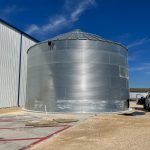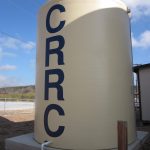 Mark your calendars for the 22nd Annual Cool House Tour happening on June 10, 2018. The Cool House Tour, a collaboration of Austin Energy Green Building (AEGB) and the Texas Solar Energy Society (TXSES), showcases seven homes, one multifamily community, and the world’s largest LEED Gold Neighborhood Development.
Mark your calendars for the 22nd Annual Cool House Tour happening on June 10, 2018. The Cool House Tour, a collaboration of Austin Energy Green Building (AEGB) and the Texas Solar Energy Society (TXSES), showcases seven homes, one multifamily community, and the world’s largest LEED Gold Neighborhood Development.
2207 East 9th Street, Austin, TX
Innovative Water Solutions LLC is proud to announce that the residence located at 2207 East 9th Street has a rainwater harvesting system installed by us.
The owner was looking for an existing house to rehab when she found this 45-foot wide lot that was home to a doublewide. The narrow site generated a new two-story home that lives large. All rooms have doors to the exterior and shaded decks wrap the house. An outdoor kitchen tops the roof, a perfect location to view the 7.4 kW solar array which will ultimately contribute to powering the owner’s future electric vehicle. Sustainable materials and principles were key components for creating a home with low maintenance and durability.
The exterior cypress siding weathers well and resists deterioration. Cypress scraps were used throughout the home for doors, paneling, window shades and countertops. Because the home sits in on a steep hill, rain gardens were constructed to prevent erosion during Texas thunderstorms. Much of the landscaping is edible with raised vegetable beds that sit over a 2,500-gallon underground rainwater catchment system. Backyard chickens roam this mini-urban farm.
Below are a few pictures of the construction of the rainwater harvesting system at the residence.
We hope to see you on the tour!!






Is there a blatter that can be used instead of a plastic tank…..I have an inground swiming pool that I would love to fill with a blatter and fill it in with dirt while still being to reuse all the plumbing and pumps already in place for the pool. Is that possible?
Yes, it is possible to decommission a swimming pool and turn it into a rainwater harvesting system. Since you want to backfill the top of it with dirt, then the water storage structure needs to be able to hold the weight of the soil. We think one of the best products to use for a swimming pool conversion is one of the modular, underground cube products that are constructed onsite, wrapped with an impervious liner, and then backfilled over. These units can be installed into the swimming pool cavity and then backfill around the edges since a pool can have irregular edges.
Do you ever install outside of the state of Texas?
While we do occasionally install systems outside of Texas, mostly they are for commercial projects. Mobilization costs for out-of-state projects can really add up so it is better for residential customers to find a local installer if they can. We do offer system design services so that you can hand over a set of professional plans to your local contractor. If that works for you, please send us an inquiry through our website. Thanks!
We are interested in more information about an under ground collection system VS an above ground collection system in the Paint Rock Texas area
For a residential project, most of the time, an aboveground system is the better option, mainly due to the expense of implementing an underground system.
We mainly employ underground tanks for rainwater harvesting systems on projects that are on small lots, so that homeowners don’t have to give up their precious yard to house a large rainwater tank, or on projects where the homeowners just don’t want to see the rainwater tank(s).
An aboveground tank is very easy to prep for with the site being leveled and then an aggregate like sand or decomposed granite used for the foundation.
An underground tank requires excavation cost along with a special type of rainwater tank. Typically, underground tanks are much more expensive than an aboveground tank, on a per gallon basis.
So if you have ample property and don’t mind the look of the aboveground rainwater tanks (see some options here: https://www.watercache.com/portfolio/rainwater-cisterns-tanks), then an aboveground rainwater system is the way to go.
Hi, looking for info on implementing this in my home in the Caribbean. Where there is water restrictions and during rainy season rain fall can be pretty heavy. We already use the standard rain water catch plastic tanks for years however the grey water is very interesting.
Sharon, thanks for the question. The main thing to keep in mind is trying to figure out how you can implement a large water storage volume at your home. Being in the Caribbean, the water storage tank options are limited. Having a large water storage volume will help you weather the drier parts of the year.
I lived in the Caribbean for 16 years. We had cisterns with pumps, and we pumped the water into some interconnected 55 gallon metal barrels on the roof of our home. Water could then be pumped and/or gravity fed (which was useful during electrical blackouts) into the home. The system worked very well.
Andrea, thanks for the comment! Yes, rainwater harvesting is very popular in the Caribbean due to the issues of supplying water on an island. In my travels in the Caribbean, I have seen many different types of rainwater collection systems. I am glad that you were able to experience collecting rainwater for your potable use. Sometimes people don’t understand that you can collect rainwater and use it for drinking purposes… many people do it around the globe everyday.
I noticed that all systems seem to show a tank with a single downspout connection.
To me this implies that you need a bunch of tanks for the above ground method if you want to collect enough water
Im wondering if the underground tank would be better for that reason alone.
With the bonus of not being visible.
Jen, actually most of the systems we install are “wet” systems which collect rainwater from multiple downspouts and routes them to a single tank. A wet conveyance system is always better in that it allows you to harvest rainwater from a large portion of your roof but stores the rainwater in one single tank so that you can have one point of usage. This allows you to potentially have a pump system to pull rainwater from the tank to use it in your irrigation system or for some other pressurized use.
yes understood,
i think i was speaking from an asthetic perspective in which all the lines are run above ground – somewhat of an eyesore, whereas underground you just have to connect each downspout directly underground
Hi Chris, I am building a new home and do not want to have gutters again (I am tired of cleaning gutters, plus getting to old to climb ladders) I am designing my home with a French Drain system. I see that you recommend above ground tanks for residential use. If I cannot find a spot in our yard lower than the drain system, what would be the best alternative to get the rain water into my rain water tank?
Jonathan
Jonathan, thanks for the question. With a french drain system going around the house where the roof drip line is, provides an opportunity to implement a surge tank collection system. Basically the french drain pipes will slope to an underground collection basin. Something like a 250 or 500 gallon tank would work. Then you employ a sump pump to pump the rainwater up to the top of a larger aboveground storage tank. While I like to use passive systems to collect the rainwater, this alternative will allow you to forego the installation of gutters.
I too am building a home on a new site and have 2 questions:
1. You mention cost being a huge factor in above or below ground. Approximately, what is the difference in cost?
2. If I don’t mind the cost (based on what is is) would you recommend installing an underground system below my home? I have read about some systems that can be used as filtered water for drinking, and the systems never need cleaning. Is this realistic?
Thank you.
Josie, thanks for the question. The cost difference between above and below ground systems can be difficult to approximate because it depends on the type of excavation that will be required. Meaning… is there bedrock that would have to be excavated? If you don’t encounter rock, then you can estimate the below ground system to be 2 to 3 times more expensive than a similar sized abovve ground system.
Installing a cistern under the house is definitely feasible but now you would need to get a structural engineer involved in designing the cistern or designing the house foundation to ensure that there would be no long-term issues.
You can definitely use your rainwater system to supply potable water. We do it all the time in the hill country of central Texas. Check with your local water supplier if a municipal water pipe is available on your property. If not, and you only have access to well water, then installing a rainwater system for potable use is most likely allowed.
Now on the subject of cleaning these systems or specifically cleaning the cisterns, you will need access to the cistern to clean it out. Now it won’t need cleaning but every 5 to 10 years (if you have the right inlet filtration and first-flush components installed in the system) but you will still need to access it for cleaning.
I hope these answers help.
Thanks,
Chris
Chris,
We have a 15 acre property in Wyoming (high mountain desert) our home is on city water but watering our property would be way to costly considering the size. We do have a well although despite the new pump it just does not produce the volume of water necessary to water the yard. I am considering a cistern that will collect rain water and I can supplement it with the well during the dry season. Can I hook a system like this to a sprinkler system that I could use to water my yard? For clarity we only intend to water a small portion of our property maybe 1 1/2 acres with sprinklers, the rest would be drip irrigation to specific trees where needed.
Can you recommend someone who could help me design a system like this? Thanks in advance!
Joel, thanks for the questions. You can certainly hook up a rainwater harvesting cistern to an inground sprinkler system. You would definitely need a pump system to provide the pressure required for the irrigation heads, etc. That being said, trying to irrigation 1-1/2 acres would take a very large rainwater system. You would be supplementing it with a lot of well water. While rainwater harvesting is great for irrigation, there are the limits of your roof collection area and your cistern size. By irrigating large areas, you could exhaust your supply of harvested rainwater quickly and then you will be back with using well water. You have to balance out the collection potential and the irrigation area.
In terms of finding a local contractor to assist you with your project, you should search the ARCSA Resource Guide at http://www.arcsaresource.com/.
Good luck with the project!
Do you have a preference for underground systems? I’m tempted to do rain harvesting but it would need to be below as I don’t want to give up space on the surface. doing a new shop build so excavation isn’t an issue. Finding a reasonable sizable option that will work and last is the issue.
David, we don’t really have a preference when it comes to underground tanks. The particular tank system just has to fit the situation in terms of the pros and cons. For smaller volumes, underground poly tanks are the best way to go. You can even interconnect them if you need more volume than what is available in a single tank. For larger volumes, you would want to look at the modular systems or even the underground fiberglass tanks. With all of these options, you may or may not have a local supplier. Therefore, the freight cost of one of these types of tanks may be expensive. But if that is your only option and you can’t find a local supplier, then that is the way it will be.
I have an above ground system with a 10,000 gallon tank but the inlet is les than 2 feet below the gutter line so the gutters are overwhelmed during anything but a light rain. Can I install an underground tank next to my above ground that the system would feed into and then a pump to pump the underground tank into the above ground tank. I’m thinking around 2,000 gallons. Any other ideas?
John, thanks for the question! There could be a few issues causing the backup in your gutters depending on how your system is set up. Now, you can definitely install a surge tank with an underground tank or every a much shorter aboveground tank and then have a sump pump or submersible pump (for the underground tank) or a centrifugal pump (for the aboveground tank) to pump the rainwater into your 10000 gallon tank. The only issue there is that you are now beholden to the pump capacity. So there will be rain events where the incoming water flow into the surge tank is over the pumping capacity of the transfer pump. This will cause the surge tank to overflow and you would lose out on harvesting that rainwater. Now, this may not happen a lot but something to be cognizant of. Also, you don’t want to just put in a “larger” pump because a large pump would end up starting and stopping multiple times during a rainstorm, causing the pump to prematurely fail.
If you are collecting rainwater via a “wet” system and collect from multiple downspouts, then you could potentially separate the underground wet collection pipes to divide the collection surface into separate pipes. You would have to install a separate inlet on the tank but by reducing the surface area going into the wet collection piping, then it would not back up as much into the gutter.
If you are collecting rainwater via a “dry” system, then you may look at increasing the size of the gutter outlet or orifice. Many times, the backup in the gutters that system experience is due to the small downspout outlet holes in the bottom of the gutter.
Hopefully these suggestions can help you out!